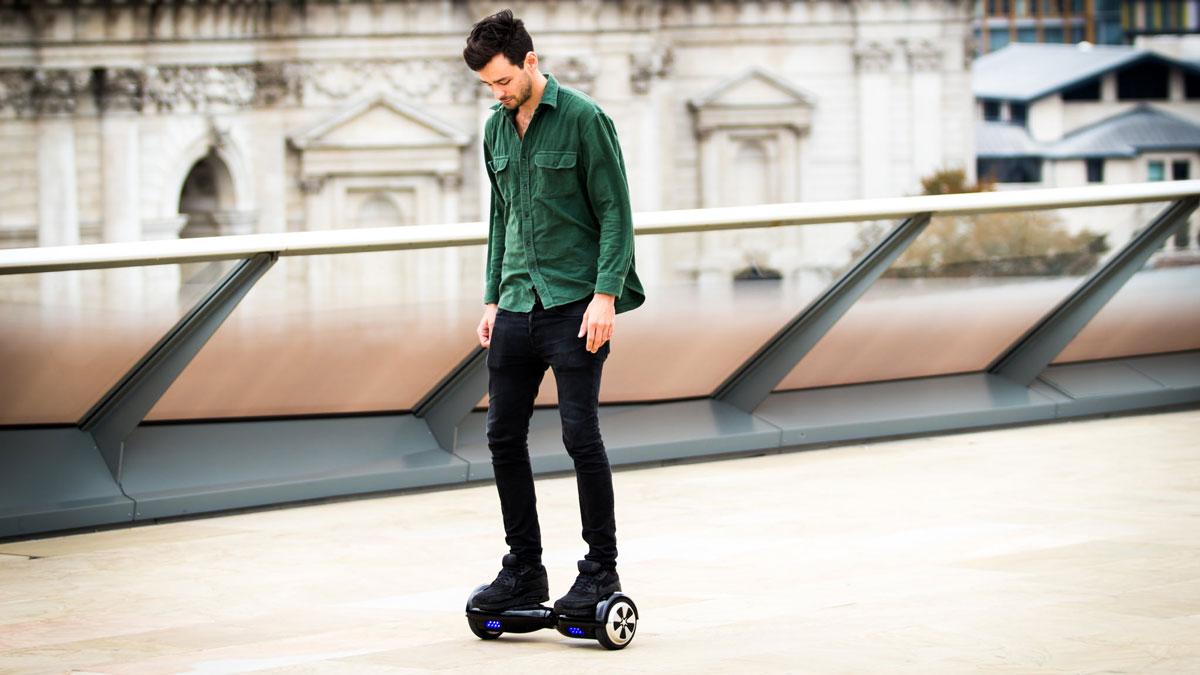Where did all those hoverboards come from?
A man rides a hoverboard.
In just a few months, two-wheeled motorized scooters have been popping up everywhere. They’re almost as ubiquitous as the selfie stick was last summer. Popularly called a “hoverboard,” they’ve quickly leapt from an Internet meme to a sought after item on many holiday wish lists.
So where did these people movers come from? Mostly Shenzhen, billed as the Silicon Valley of China.
Buzzfeed News Reporter Joseph Bernstein detailed the rise of the hoverboard and the factories that make them.
“The hoverboard phenomenon started early this year or maybe spring of this year, when rappers and celebrities — Wiz Khalifa, Justin Bieber, Kendall Jenner — started tweeting and Instagramming and Vining about them,” Bernstein said. "From there, American distributors started looking to China and asking their manufacturers to make these boards."
It’s unclear where those celebrities got their hoverboards. Given the quick-turnaround nature of Chinese manufacturing, it’s hard to determine who made the first one. In 2014, Chic Smart, just outside of Shanghai, manufactured a board that “may or may not have been ripped off” from an American company, according to Bernstein.
“At some point, they became kind of ambient in the Chinese manufacturing culture. American distributors noticed them, and probably smart ones put them on the feet of influential social media people,” Bernstein said.
“It’s interesting to think about how the idea spread so quickly,” Bernstein said. “An idea can spread very quickly, virtually here in the states and in this part of China a physical idea can spread very, very fast.”
Shenzhen is a city that was “purpose-built to bring the world electronics.” From iPads to drones, many of the electronic devices used by global consumers come from this Chinese city across from Hong Kong. Shenzhen’s ascent began 35 years ago when the city became the first “Special Economic Zone.” The new designation allowed global and domestic corporations to operate free from prohibitive Communist business restrictions. Over the last four decades, Shenzhen has gone from a small fishing village to a city of approximately 15 million.
“There are electronics markets and electronics networks of businessmen and manufacturers who are just totally ready to build anything that the rest of the world — and now the Chinese market — is asking for,” Bernstein said. “It’s a place in the world that is most equipped to build something new and quickly.”
Of course that rapid turnaround doesn't always lead to the highest quality products. There have been at least a half-dozen reports of the devices catching on fire from normal use — and most US airlines have now banned them from their planes over fears of fires in flight from the lithium-ion batteries. Just last week, a charging hoverboard caused a home fire outside Washington.
With as many as 1,000 hoverboard factories operating in Shenzhen alone, it’s likely that millions of the devices have been made this year. Some of the same factories that produce hoverboards have produced rice cookers, mobile phones and DVD players. A handful were churning out selfie sticks less than a year ago.
“They literally shift on a dime,” Bernstein said. “Certainly they have the ability to make any kind of physical object that you want to mass distribute very quickly."
